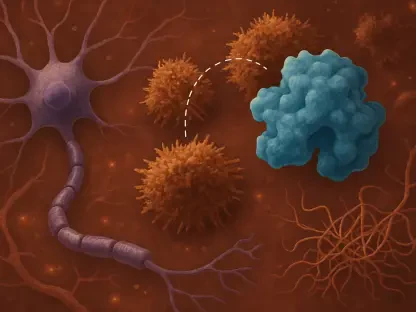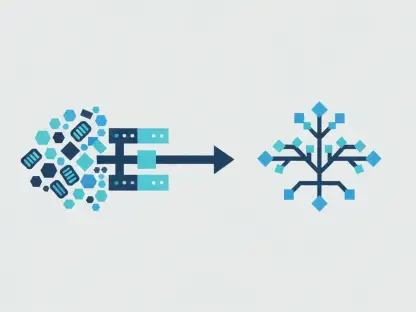Breast cancer survivors are growing in number, thanks to early detection and effective treatments. However, alongside their survival, an undercurrent of accelerated aging has been observed, raising questions about the long-term impacts of the disease and its treatments on biological aging. This phenomenon indicates that both the cancer itself and the administered treatments contribute significantly to the accelerated aging process in survivors, marking an area of growing concern and investigation.
The Significance of Accelerated Aging
Accelerated aging among breast cancer survivors is becoming a significant issue, as cognitive decline and physical frailty seem to be more common in these individuals compared to women who have never had cancer. This phenomenon fosters an urgent need to understand the biological mechanisms driving it. Accelerated aging can lead to a higher incidence of age-related illnesses, reduced quality of life, and increased healthcare needs, making it crucial to delve deeper into why and how these processes occur. The link between breast cancer treatment and accelerated aging highlights the broader implications for long-term survivorship care and the importance of tailored interventions for mitigating these effects.
The increased incidence of accelerated aging in breast cancer survivors is likely multi-factorial. It suggests that both tumor biology and the treatments utilized play pivotal roles. While life-saving treatments like chemotherapy and radiation have extended lives, they may also induce cellular changes that predispose survivors to faster biological aging. Understanding these dynamics is essential not just for improving longevity, but for enhancing the overall well-being of patients as they navigate their post-treatment lives. As survivorship rates improve, the focus must also shift to maintaining their quality of life.
Study Context and Parameters
A recent study published in Aging has delved into the relationship between Phenotypic Age Acceleration (PAA) and various breast cancer characteristics and treatments. PAA is a measure that combines chronological age with biomarkers like C-reactive protein and eight other routine blood markers to evaluate biological aging and predict mortality risk. This innovative approach offers a cost-effective and accessible means of assessing the biological impacts of cancer and its treatment on aging.
The study analyzed data from a substantial cohort: over 1,200 breast cancer patients and hundreds of cancer-free controls, yielding critical insights. Researchers found notable differences in aging trends between breast cancer survivors and those never diagnosed with cancer. By employing PAA, the study could intricately link specific breast cancer characteristics and treatments to the observed accelerated aging, providing a clearer picture of the factors at play. This comprehensive analysis is a significant step toward understanding the full impact of breast cancer on survivors’ long-term health.
The findings revealed profound implications for treatment approaches and survivorship care. For instance, while some treatments might show initial benefits in reducing PAA, their long-term effects might necessitate adjustments in clinical practice. Such detailed insights underscore the importance of personalized medicine, taking into account individual variability in tumor characteristics, treatment responses, and long-term biological aging. The results advocate for a nuanced approach to treatment, balancing immediate survival against long-term health and quality of life.
Insights from Participant Data
The study analyzed data from over a thousand breast cancer patients and hundreds of cancer-free controls, uncovering significant differences in aging trends. It highlighted how breast cancer patients, who are typically older at diagnosis, exhibit a higher PAA compared to their peers without cancer. On average, breast cancer patients were five years older than the control group, and significantly, their mortality rate over a median follow-up period of nine years was doubled when juxtaposed with the controls.
Breast cancer stages varied widely among participants, with 68% of patients having early-stage (I or II) and 17% presenting more advanced (III or IV) stages at diagnosis. Tumor grading also provided considerable insights, with 35% being high-grade and 39% intermediate-grade. Additionally, the study noted the hormone receptor status with 45% HR+/HER2-, 13% HER2+, and 14% TNBC. Such diverse tumor characteristics allowed for a detailed analysis of how specific factors influence aging rates. Data from this study vividly painted a picture of how different tumor characteristics contribute to the overall aging process.
The insights derived from this comprehensive dataset highlight the critical role of tumor characteristics in influencing PAA. For instance, patients with high-grade or advanced-stage tumors exhibited a more pronounced accelerated aging process. Each tumor type and stage is a piece of the puzzle that, when viewed collectively, underscores the complexity of cancer treatment and its aftermath. Such findings can help tailor specific interventions aimed at mitigating accelerated aging, enhancing the quality of survivorship.
Tumor Characteristics and Stages
A closer look at tumor characteristics revealed that cancer stage and grade play pivotal roles in determining the rate of accelerated aging. Higher-grade and advanced-stage tumors are linked with more pronounced aging, emphasizing the need for early detection and targeted treatments. Patients diagnosed with stage III/IV breast cancer showed a consistent five-year PAA at diagnosis that persisted for ten years. This indicates that aggressive and advanced tumors significantly contribute to faster biological aging processes in survivors.
High-grade tumors were similarly associated with sustained accelerated aging. Patients exhibited a peak in accelerated aging of a three-year deviation at one year post-diagnosis, which only slightly declined to a two-year deviation at the ten-year mark. This consistent trend in accelerated aging among individuals with high-grade tumors suggests that the biological impact of these tumors extends far beyond the initial treatment period. Thus, the study underscores the critical importance of early-stage diagnosis and intervention in mitigating long-term age acceleration impacts.
The findings provide compelling evidence that tailored treatment and vigilant monitoring are essential for high-grade and advanced-stage breast cancer patients. These groups are particularly vulnerable to rapid aging processes, necessitating specialized survivorship care plans that address both cancer treatment and long-term biological aging. Personalized intervention strategies could help manage the dual challenge of cancer treatment while minimizing the accelerated aging effects, ultimately improving both survival rates and quality of life for these high-risk groups.
Impact of Cancer Subtypes
Examining different cancer subtypes, such as HER2+ and TNBC, has shown that certain types may lead to faster aging than others. HER2+ patients aged faster than HR+/HER2- counterparts, with a PAA of two years at one-year post-diagnosis and 1.5 years at the five-year mark. On the other hand, TNBC patients experienced an even more rapid aging rate of 3.5 years at one year, two years at two years, though interestingly this subtype demonstrated some reversal over time, being phenotypically younger by two years than their chronological age at the ten-year point.
These findings articulate the necessity for personalized treatment plans and follow-up care specific to the cancer subtype. Each subtype’s unique biological behavior influences the rate and manner of aging, requiring clinicians to adopt a nuanced approach. The insights stress the importance of ongoing research to refine understanding and improve interventions tailored to each subtype’s distinct needs. This can enable better management of accelerated aging while ensuring effective cancer treatment, striking a balance between survival and long-term health outcomes.
Ongoing investigations into the variances in accelerated aging among different breast cancer subtypes are pivotal. Understanding how each subtype affects biological aging will inform more effective treatment protocols. Personalized survivorship care plans can then be developed, taking into account the specific aging trajectories tied to each cancer subtype. Such insights are invaluable for optimizing both the immediate and long-term care strategies of breast cancer survivors, helping to tailor effective interventions while focusing on enhancing the quality of life in the aftermath of treatment.
Treatment Modalities and Their Effects
The type of treatment received also influences the rate of aging. Surgery was found to generally reduce phenotypic age, while chemotherapy and targeted therapies often increased aging rates initially but showed some reversal over time. Hormone therapy, however, was consistently linked with accelerated aging. The impact of these treatments varies, suggesting a complex interplay between therapeutic efficacy and long-term biological effects. Surgery, the most common intervention administered to nearly 90% of patients, was beneficial in reducing aging, with patients displaying a phenotypic age seven years younger than their chronological age at year ten.
Radiation therapy showed mixed results, with its standalone use reducing PAA by two years. Combining radiation with surgery mirrored the effects of surgery alone. Chemotherapy and targeted therapy, on their own, did not significantly impact PAA. However, combination regimens including chemotherapy resulted in accelerated aging by four years at one year post-diagnosis. Hormone therapy was linked to nearly three years of accelerated aging, a consistent effect observed at both one and ten years post-treatment, indicating long-term impacts that necessitate careful consideration and potential mitigation strategies.
Further insights from the study revealed specific chemotherapy agents, such as alkylating agents and anthracyclines, initially increased PAA by two years at year one but reversed over time resulting in a reduction in phenotypic age by the five and ten-year marks. Conversely, antimetabolites and aromatase inhibitors initially reduced PAA by one year at two years but ultimately led to accelerated aging by seven years and two years respectively at ten years. Selective estrogen receptor modulators (SERMs) demonstrated initial longevity benefits that weakened with prolonged treatment. These detailed findings emphasize the nuanced effects of different treatments on aging, highlighting the need for tailored therapeutic approaches.
Unveiling Mechanistic Insights
The underlying mechanisms of accelerated aging are tied to the treatments themselves. Cytotoxic chemotherapy and hormone therapy induce cellular changes that accumulate, leading to chronic inflammation, mitochondrial dysfunction, and other hallmarks of aging. Cytotoxic chemotherapy can induce cellular senescence, telomere shortening, and genomic instability, which are long-lasting and can persist even a decade post-diagnosis. This dual role of chemotherapy, both life-saving and aging-accelerating, underscores the predicament faced in treating cancer patients.
Hormone therapy, while effective in targeting specific cancer types, alters hormonal balance and genomic stability. These changes result in mitochondrial dysfunction and stem cell exhaustion, contributing to increased biological aging. Prolonged hormone therapy can exacerbate these effects, accentuating the need for strategies that balance cancer control with the mitigation of accelerated aging. The intricate relationship between effective cancer treatment and the long-term biological impacts it induces remains an area ripe for further research.
Additionally, the study posits that the lasting impact of these treatments on cellular functions drives the observed accelerated aging. Chronic inflammation, a common consequence of cancer therapies, plays a pivotal role in this process. Mitochondrial dysfunction further accelerates the aging phenomena by impairing energy production and increasing oxidative stress. Future treatment regimens must address these mechanistic insights, optimizing cancer control while minimizing adverse long-term effects on biological aging.
Path Forward for Research and Interventions
The number of breast cancer survivors continues to grow due to advancements in early detection and effective treatment options. However, while survival rates have improved, a troubling trend of accelerated aging among these survivors has been noted. This raises significant concerns about the long-term effects of both the disease and its treatments on biological aging processes. Research suggests that the cancer itself, along with the various treatments administered, plays a crucial role in hastening the aging process for survivors. This phenomenon highlights a critical area of concern and warrants increased investigation to understand the full spectrum of impacts. As survival rates increase, it’s essential to focus not only on overcoming cancer but also on ensuring the quality of life in the years that follow. The implications of accelerated aging can affect numerous aspects of health, underscoring the importance of comprehensive care strategies for breast cancer survivors to mitigate these long-term consequences.









